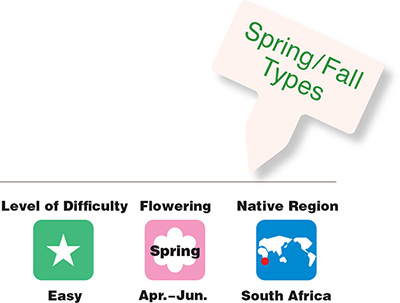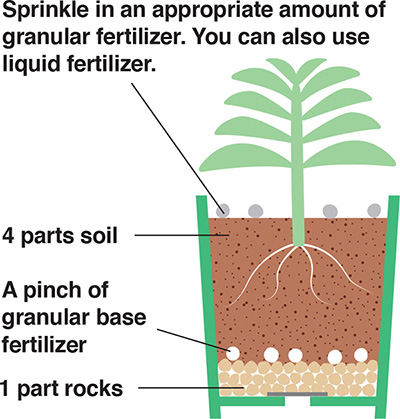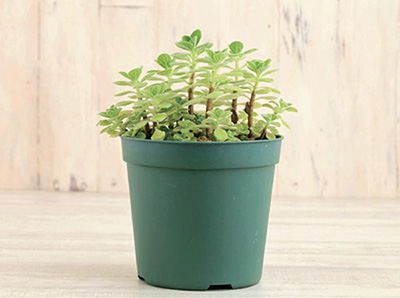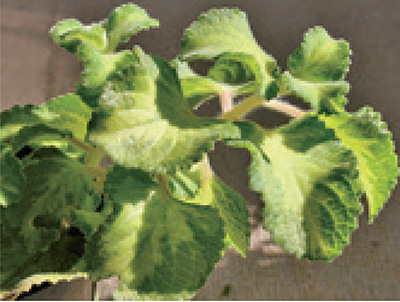Spring/Fall Types
Plectranthus aromaticus

Characteristics of P. aromaticus
As the name implies, the leaves of P. aromaticus have a pleasant aroma, and this refined fragrance attracts even those who aren’t usually fans of succulents. Perennial plants can either creep along the ground or grow erect, and

Points to Check when Buying
The leaves should be luxuriant and the plant full of life. Avoid plants where the stem is stretched long and spindly.

Soil Composition
Mix 5 parts small-grain Akadama, 3 parts Kanuma soil, and 2 parts mulch for a ratio that has good drainage, water retention, and breathability. Add a layer of gravel like large-grain Akadama or pumice to the bottom of the pot.

Fertilizer
When you transplant a succulent, add a layer of granular base fertilizer on top of the layer of gravel.
How to Transplant
If the plant is in a pot, pull it out and massage out about 2/3 of the old soil stuck to the roots. Switch to the new pot, spread the roots apart, and pour in fresh soil.

Pour in the slightly dampened new soil. When you have finished transplanting, lightly tap the pot to level the soil and place the plant in partial shade to take root.
How to Propagate
There will be many branching stems, so cut off a branch with leaves attached, and then either insert it into soil or let it grow roots in water before planting it in soil.
Leaf Cutting

Place the leaf you removed from the succulent stem on the surface of dampened soil, and after about 10 days the leaf will begin to take root and sprout. When your new plant has grown 4 or 5 leaves, pull it from the soil, taking care not to injure the roots, and transplant it.
Stem Cutting

Let the cut end of the branch dry out for 2–3 days, and then insert the branch into soil. Keep the soil constantly damp and leave the plant in partial shade to take root. You can also let the plant develop roots in water.
Key Points for Growing P. aromaticus
P. aromaticus is a robust species, so during its growth season, it can grow even when exposed to rain. However, if it appears the rain will continue for a long time, move your succulent under the eaves and out of the rain to prevent root rot. These plants enjoy direct sunlight but can be sunburned by the harsh sunlight of midsummer, so move your plant into partial shade and avoid watering during the hottest part of the day. These plants are also slightly sensitive to cold, so move your succulent to a sunny place indoors during the winter and water it less frequently.
Cultivation Calendar

Succulent Advice Q&A
Q My plant’s stems grew too long, and now they stand out too much and are hard to look at!
A Because the stems of this species stand upright, they will invariably grow too long. Therefore, you will need to trim the stems and keep the height of your plant down. Axillary buds should sprout from the stems soon, so try to replant. If you insert a cutting from a stem with leaves attached into soil, it will easily develop roots and you can propagate a new plant.


This extremely fragrant plant is used in aromatherapy.
Members of the Plectranthus Genus

P. pentheri

P. amboinicus variegata

P. ernstii